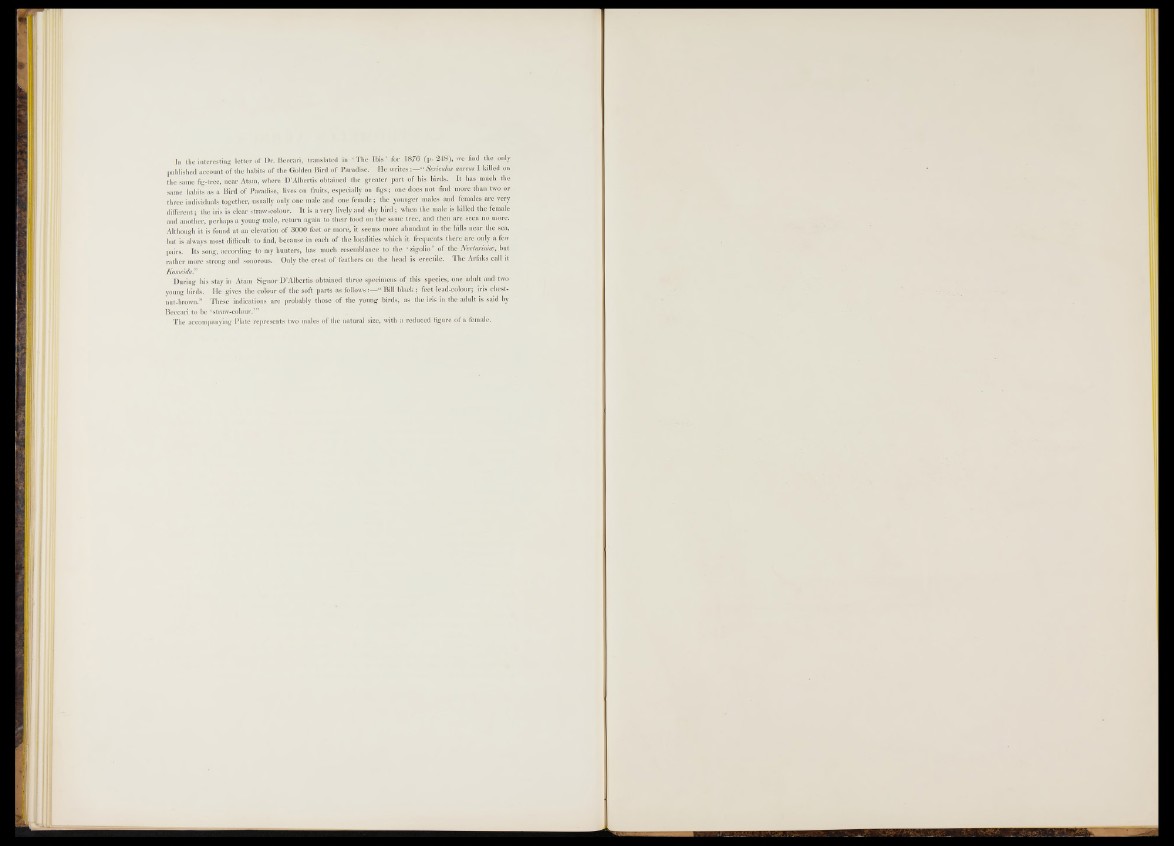
In the interesting letter of Dr. Beccari, translated in ‘The Ibis’ for 187C (p. 248), we find the only
published account o f the habits of the Golden Bird o f Paradise. He w r i t e s “ Sericulus aureus I killed on
the same fig-tree, near Atam, where D ’Albertis obtained the greater part of his birds. It has much the
same habits as a Bird of Paradise, lives on fruits, especially on figs; one does not find more than two or
three individuals together, usually only one male and one female; the younger males and females are very
different; the iris is clear straw-colour. It is a very lively and shy bird; when the male is killed the female
and another, perhaps a young male, return again to their food on the same tree, and then are seen no more.
Although it is found at an elevation of 3000 feet or more, it seems more abundant in the hills near the sea,
but is always most difficult to find, because in each o f the localities which it frequents there are only a few
pairs. Its song, according to my hunters, has much resemblance to the ‘zigolio o f the Nectarinia, but
rather more strong and sonorous. Only the crest o f feathers on the head is erectile. The Arfaks call it
Komeida.”
During his stay in Atam Signor D ’Albertis obtained three specimens o f this species, one adult and two
young birds. He gives the colour o f the soft parts as f o l l o w s £i Bill black; feet lead-colour; iris chestnut
brown.” These indications are probably those o f the young birds, as the iris in the adult is said by
Beccari to be ‘straw-colour.’”
The accompanying Plate represents two males o f the natural size, with a reduced figure o f a female.